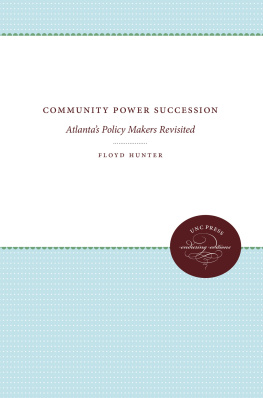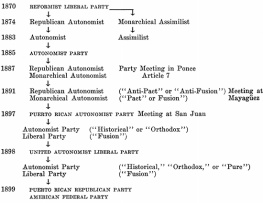From Working Girl to Working Mother
2003 The University of North Carolina Press
All rights reserved
1985 The University of North Carolina Press
All rights reserved
Manufactured in the United States of America
First printing, January 1985
Second printing, May 1986
Library of Congress Cataloging in Publication Data
Weiner, Lynn Y, 1951
From working girl to working mother.
Bibliography: p.
Includes index.
1. WomenEmploymentUnited StatesHistory.
I. Title.
HD 6095. W 39 1984 33 I -40973 84-7276
ISBN 0-8078-1612-4
ISBN 0-8078-4159-5 (pbk.)
Portions of Chapter 3 first appeared in somewhat different form in the authors articles: Sisters of the Road: Women Transients and Tramps, published in Walking to Work: Tramps in America, 17901935, edited by Eric Monkkonen, by permission of the University of Nebraska Press. Copyright 1984 by the University of Nebraska Press; and Our Sisters Keepers: The Minneapolis Womans Christian Association and Housing for Working Women, originally published in Minnesota History 46: 189200 (Spring 1979), copyright by the Minnesota Historical Society and used with permission.
THIS BOOK WAS DIGITALLY MANUFACTURED .
For Tom, Andrew, and Jeffrey
Contents
Tables
Tables
1. Number and Proportion of Working Women in the U.S. Labor Force, 18701980
2. Percentage of Women in the U.S. Labor Force, by Family Status, 18901980
3. Percentage of Boarders and Lodgers among Women Workers for Selected Cities, 1900
4. Percentage of Single Women, by Age, in Birth Cohorts, 18651874 to 19251934
5. Percentage of Women Workers in Selected Occupations, by Native Origin and Race, in Selected U.S. Cities, 1900
6. Percentage of Married Women in the Labor Force, by Race, Selected Years, 18901980
7. Percentage of Married Women in the Labor Force, by Presence and Age of Children, 19481970
Figure
1. Composition of Female Labor Force by Marital Status, 18901980
Acknowledgments
I take great pleasure in acknowledging the help I have received during the writing of this book.
Sam Bass Warner and Roslyn Feldberg encouraged this study in its earliest forms. Richard Bushman, David Hall, Aileen Kraditor, and Cecelia Tichi were among those at Boston University who taught me how to think about American history and culture. Kathryn Kish Sklar sparked my initial interest in history when I was an undergraduate at the University of Michigan; she has remained a mentor and a friend ever since.
I am also grateful to Northwestern University, where the History Departments Associate Program provided me with an affiliation and with access to an excellent library. The American Historical Association generously awarded me a Beveridge Grant during the final stages of research and writing.
The manuscript was greatly improved because of suggestions and criticisms offered by Thomas Dublin, Alice Kessler-Harris, Eric Schneider, Kathryn Kish Sklar, Winifred Wandersee, and Sharon Weiner. For their useful comments on portions of the book presented at conferences, I thank Estelle Freedman, Brian Gratton, Barbara Hobson, and Ruth Rosen. An early version of the manuscript benefited from discussions with Mary Ann Garnett, Heather Huyck, Linda Lounsbury, Susan Smith, and Meryl Weinreb.
Many librarians and archivists have been most helpful, especially David Klaassen of the Social Welfare History Archives, Mary Ann Bamberger of the Special Collections library at the University of Illinois at Chicago, Archie Motley of the Chicago Historical Society, Dallas R. Lindgren of the Minnesota Historical Society, and the staff of the Schlesinger Library at Radcliffe College.
For granting permission to use their unpublished records, I am indebted to the Child Welfare League of America, the Minneapolis Womans Christian Association, the Travelers Aid Association of America, and the Womens Educational and Industrial Union.
I also wish to express my appreciation to the editors at the University of North Carolina Press: to Iris Tillman Hill, for seeing the manuscript through several revisions, and to Sandra Eisdorfer, for her critical eye and excellent suggestions during the editing process.
Finally, my family has always encouraged my efforts, and I would like to thank them, too. My mother, Audrey Allen Weiner, always believed in the potential of her children. My extended familymy father Charles, and Inge Weiner, Sharon Weiner, Tom Hospelhorn, Stuart Weiner, Maria Treccapelli, Alan Weiner, and Robert and Virginia Moherhave remained supportive during the long years of education and writing. My greatest debt is to my husband, Tom Moher. He has been involved in this project from the beginning; his confidence in me, his astute criticism of the manuscript at every stage, and his skill at juggling the demands of work and fatherhood have contributed immeasurably to the completion of this book.
From Working Girl to Working Mother
Introduction
The volatile debate in the 1980s over the social consequences of working mothers is firmly rooted in a historical controversy over the employment of women. Where the absence of men from the labor force has long been considered an anomaly, the presence of women in the labor force has continually inspired controversy, investigation, and reform. The dramatic expansion of the female labor force in modern times has revolutionized the nature of work and family life in the United States.
This book looks at the general history of the working woman in the United States through 1980. The study emphasizes two levels of analysisthe material basis of changing social and economic behavior and the concomitant ideological debate over appropriate female roles, which has in turn affected social reform and public policy.
The female sector of the labor force has more than tripled in the last century, growing from 14 percent in 1870 to 42 percent in 1980. These gains reflect the increasing propensity of women to work. Where just one in seven women worked for wages in 1870, by 1980 one in two women were gainfully employed (see There have yet been few attempts to take a long-term historical perspective on the employment of American women.
The long view shows that the expansion of the female labor force occurred in two distinct phases. The first phase was the era of the working girl. During this period, from the mid-nineteenth century until the early decades of the twentieth century, the single, and often self-supporting, young woman worker became a visible member of the urban labor force. The second phase was the era of the working mother. In this period, from the early twentieth century until the present day, married women and mothers came to the forefront of the female labor force and also dominated the accompanying debate over women and work.
Table 1
Number and Proportion of Working Women in the U.S. Labor Force, 18701980
Sources: U.S. Bureau of the Census, Comparative Statistics for the U.S., 18701940, p. 92, table xv; U.S. Bureau of the Census, Nineteenth Census of the U.S., vol. 1, pt. 1, p. 372, table 78; U.S. Bureau of the Census, 1980 Census of Population, p. 25, table p. 3.
a In thousands.
These two phases of labor force expansion were characterized by factors of class and race. Although poor, black, and immigrant women had long labored in the marketplace for subsistence wages, they had excited little public controversy because they had not been considered subject to middle-class expectations of domesticity. It was when respectable groups of womenthat is, women who were white, native-born, and nondestituteentered the labor force that public attention was first drawn to the changing work patterns of women.






